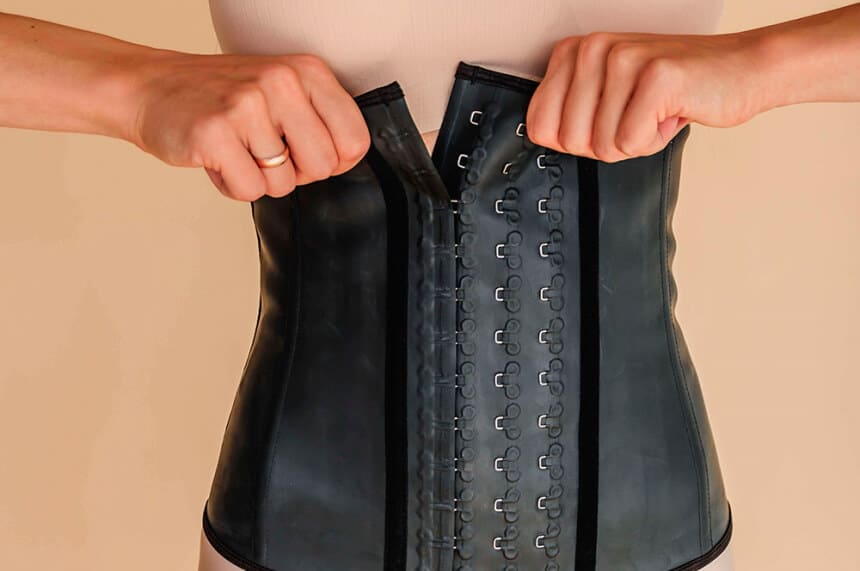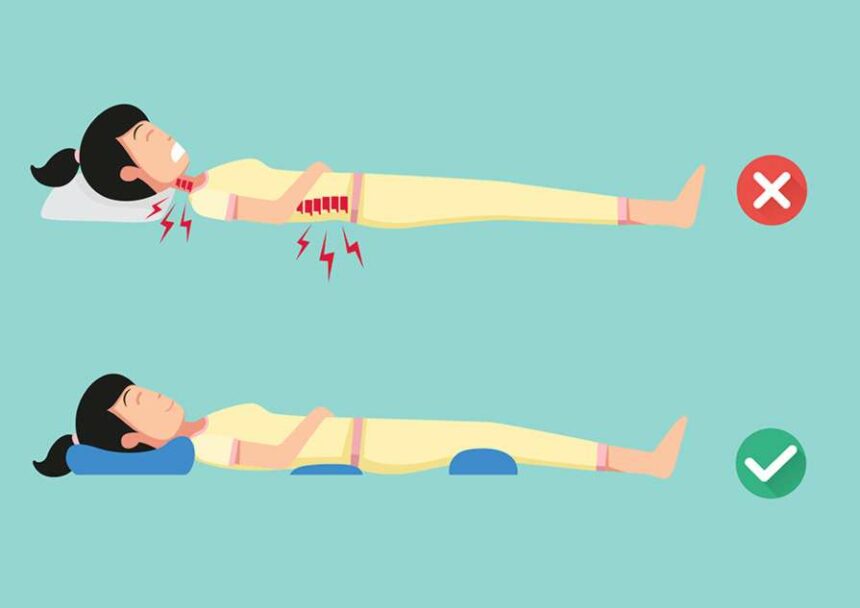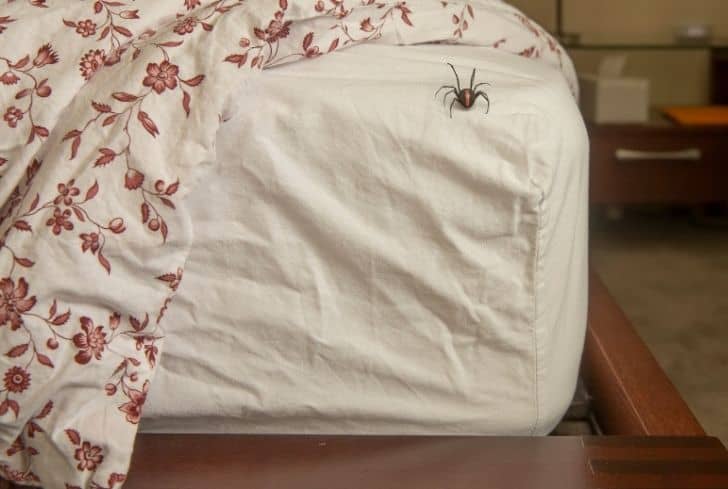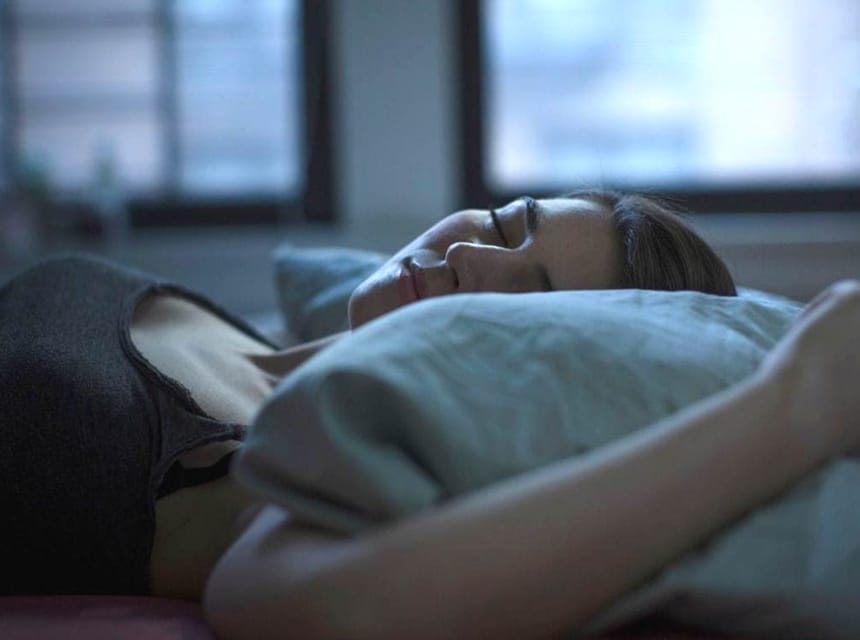

Waist trainers are a useful garment for body modification with the goal of an hourglass figure. Using waist trainers to gain these desired effects isn’t abnormal, but it can be hazardous, especially when resting while wearing one. But can you sleep in a waist trainer? The answer is that you shouldn’t.
These modern-day corsets are a functional and fashionable option for many men and women. This type of training is added to many beauty regimes and weight loss journeys. The article looks at the benefits and downfalls of wearing this specific shapewear both during the day and the night. When it comes to sleeping through, you take numerous risks when taking a waist trainer to bed.
Simply put, a waist trainer is a kind of clothing that trains your abdomen to assume the desired shape. It redefines the shape of the body into something preferable to the user. Typically, this is the hourglass shape. These garments work by having a tight grip about someone’s midsection to slim it down.

Start with one hour a day or less, depending on your tolerance. From there, you’ll be able to add more hours as you gradually and your body become more accustomed to the trainer.
These should only be worn for up 10 hours at one time. Most professionals suggest that a waist trainer should be worn for 8 to 10 hours a day at most. Dedicated users and fans can wear them for up to 20 hours after consulting with their doctors.
Note that the best time to wear a waist trainer is during the day, in your waking hours.
As shapewear, both waist trainers and corsets are designed to provide a specific shape on the human body. They have similarities, but the functionality is inherently different. Corsets use their rigidity to create a body shape.
Typical and modern shapewear use materials like latex to provide flexibility while passively training the shape of the person’s silhouette. Waist trainers like the ones from ShaperX are designed to be comfortable, flexible, and breathable, whereas corsets are much less adjustable, flexible, and simple to wear.

There are advantages to using this product. Wearing waist trainers are proven to have the following benefits:
The typical shape is an hourglass figure with an emphasis on a larger bust and hips while the stomach and abdomen shrink. Although results are seen immediately while wearing the trainer, it can take months for the results to be semi-permanent.
Wearing waist training during exercise can aid in weight loss by engaging your core in all the movements. It assists in getting rid of that stubborn but adorable tummy. Wearing a waist trainer for an excessive amount of time can weaken your abdominal muscles, making it harder to gain in that area. This means that it’s harder to get abdominal muscles with a waist trainer.
Constricting the midsection of the body forces the spine to adjust, allowing for a straighter spine. Overall, this benefits the wearer with a proper posture and results in lower back pain and health complications.
Is it bad to sleep with a waist trainer on? Yes. Although there are benefits to wearing shapewear overall, there are several more drawbacks, especially when resting in one.
Adding additional hours at night wearing one does not mean better or quicker results. Going beyond the suggested 8-10 hours isn’t beneficial. Sleeping with waist trainer results can differ depending on the person. It can instead lead to several problems Trusted Source Do Waist Trainers for Men Really Work? | Men's Health Waist trainers claim to be able to squeeze you down to a different size. We tried one and talked to experts to see if they work. www.menshealth.com that are widespread among waist trainer users.
Wearing constricting clothing while one attempts to rest is unpleasant. This has an immediate impact on the quality and length of sleep, leading to fatigue, lowered immune response, and emotional stress because of the disrupted cycle. Through the research of Terrence Green and Amanda Roby published in Respiratory Care reported that while wearing a waist trainer, people are more likely to have shortness of breath, excessive sweating, and more pain Trusted Source The Effect of Waist Trainers on Breathing | Respiratory Care Having and sustaining a perfect body is a goal that many people are trying to reach. This is further influenced due to increasing interest in social media. rc.rcjournal.com .

Much like chest binders and corsets, waist trainers constrict the chest and lungs, making breathing harder. This is a huge issue that can cause the same problems like obstructive sleep apnea. Less sleep has been reported by the American Academy of Sleep Medicine Trusted Source Late bedtimes and less sleep may lead to weight gain in healthy adults | AASM A new study suggests that healthy adults with late bedtimes and chronic sleep restriction may be more susceptible to weight gain due to the increased consumption of calories during late-night hours. aasm.org to result in weight gain in otherwise healthy adults.
The fabric’s constriction can harm your organs. The overcrowding of organs such as the kidney and liver can make them less efficient.
Does sleeping with a waist trainer help lose weight and unhealthy fat? Not really. In fact, it can have the opposite impact because of organ stress, a lack of proper rest, lack of oxygen and circulation, and many more health concerns.
Waist trainers can resist the lymphatic system. This system is responsible for getting rid of toxins, impurities, and waste from your body, as well as improving immune response, infection healing.

While wearing the garment, it restricts the midsection right where all the digestive organs sit. One of the most common side effects of sleeping in a waist trainer is acid reflux. This happens because it constricts the internal organs.
Wearing a waist trainer at night, even if you don’t wear it during the day, can have massive impacts on your muscles, both the ones being constricted and the ones that are compensating for that constriction. Leaving your muscles and tendons sore without a break causes serious health concerns.
Is it safe to sleep with a waist trainer on? No. It’s not just physically dangerous but emotionally as well. Many people suffer from mental illness, nightmares, and insomnia. Wearing a waist trainer while you sleep can worsen the mental health issues already present.
Not only that, a hyper-focus on one aspect of your body, such as your figure, has proven to have repercussions, especially within topics such as body image, weight, BMI, stigmatism, online inspiration, and body positivity.
Sleeping means that there are multiple different and often obscure positions that people sleep in. These positions provide a risk that the trainer could be ripped, stretched, or otherwise damaged.
At night, can you wear a waist trainer to sleep? The answer to this is yes, you can, but it goes against the advice of this article. Some people can’t wear a waist trainer during the day. Whether this is because of their job, their lifestyle, their clothing aesthetics, or for other personal reasons, there are multiple options.
If you’re thinking of wearing a waist trainer during the night, consult your physician to talk about the safest and healthiest way to do so for you. If you’re determined to sleep with a waist trainer, at least do it as safely as possible.
Having shapewear that fits both properly and comfortably is vital to its efficiency, but it also helps when falling asleep in one. A shorter waist trainer offers less slimming area, but it permits easier breathing at night. Next, a looser waist trainer provides less constriction, but it allows for more room in the torso. This means more breathability.

Latex waist trainers are much more comfortable and lenient in movement. Typically, this is helpful while working out. This is especially helpful for those that sleep on their stomach or constantly toss and turn in the night. These are also more durable than everyday waist trainers.
Nobody should sleep with a waist trainer the first day they try it on. This can cause massive and immediate side effects. To limit those side effects, get used to the trainer during the day, starting with an hour and gradually increasing. Attempt an hour-long nap with the garment on and then gradually add in from there.
Adding to your comfort is one of the best ways to ensure a decent sleep. Additional plush support, as in The GravityLux by WinkBeds, can help lessen the stress on your body, whether it comes from pillows, bed linens, mattresses, bedding toppers, or other bedding accessories.

There is multiple different sleeping positioning. Some of these are better for you and your waist trainer. Sleeping on either your side or your back is typically the most comfortable position while wearing a waist trainer. Depending on your sleeping position, multiple different things greatly help. When sleeping on your back, add a pillow under the small of your back. For sleeping on your side, a body pillow, a cooling pillow, or an ergonomic option does wonder. Unfortunately for stomach sleepers, there’s not a lot of options, but sleeping with a pillow under your neck can prevent strain on your spine.
There are many different waist slimming options out there. Incorporating a waist trainer into your life is helpful, but it should revolve around one or be reliant upon one. Getting a good night’s sleep is better for weight loss than sleeping in a waist trainer. While you sleep, a comfortable mattress as Plank Luxe Hybrid is much better for not only weight loss but your overall health.
Getting in perfect shape can be difficult. That’s where waist training comes in. But it doesn’t come without risks. Snoozing while wearing a waist trainer is an option, even though it’s not the best option available. Doing so has serious and dangerous health issues and impacts. Although there are some benefits such as weight loss and emphasizing the body’s curvature, it has much more negative outcomes. There are other options for getting a slim shape than sleeping in a waist trainer. Thus, the question isn’t, can you sleep in a waist trainer but should you. That answer is no. It would be best if you didn’t sleep in a waist trainer.
In conclusion, wearing a waist trainer while working out or during the day is one thing. Wearing a waist trainer at night is simply too risky to be worth it.





